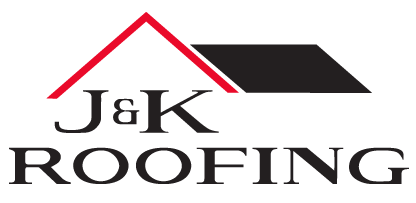
Pros and Cons of Synthetic vs. Felt Roofing Underlayment
If you’ve never seen how a new roof is installed, you might think that the shingles are laid directly over the roofing deck, which is usually plywood or something called OSB: oriented strand board, a type of wood panel made specifically for roofing.
The truth is that there’s a very important layer of material that must also be installed to make your roof an effective barrier from the harsh Colorado weather like hail and snow. This material is called roofing underlayment.
In this article, we’re going to take a look at the two types of underlayment: felt and synthetic.
What Roofing Underlayment Is — and Why It’s Important
Roofing underlayment is the material that goes in between your roofing deck and your shingles. It is rolled out to create another water-resistant (not necessarily waterproof) barrier below your shingles to add additional protection from storm damage for your home.
There are two main types of roofing underlayment: felt and synthetic.
Felt underlayment is created by saturating paper or fiberglass with asphalt. It comes in two different weights: 15- and 30-pound, with 30-pound being the more durable, heavy option.
Synthetic roofing underlayment is typically made from durable polymers that are created to be water-resistant and easy to work with. Many roofing contractors prefer to use synthetic roofing underlayment over felt.
Let’s take a look at the pros and cons of synthetic vs. felt roofing underlayment.
Felt Underlayment
Felt underlayment can be considered the traditional kind of roofing underlayment, as it’s been around for a very long time. With that said, the technology behind it hasn’t changed much, which means it can’t keep up very well with developments in synthetic materials.
Pros
- Might be cheaper: traditional felt underlayment is often the more cost-effective option.
Cons
- Tears easily: felt is fairly rigid and not durable, creating opportunities for rips and tears.
- Slippery surface: it can be difficult to walk on and creates a slip hazard.
- Can’t be left exposed for long periods of time: if left out in the sun, it can dry up or leak oils that might further weaken the material and/or leave a stain.
- Doesn’t lay as flat: especially after being exposed to water, felt can wrinkle and become difficult to work with and lay shingles over.
- Heavy: felt is a heavy material, making it difficult to work with and transport.
Synthetic Underlayment
Synthetic underlayment has been around for just a couple decades, but it has become the go-to material for roofers across the country. It has many pros in its favor, with few cons.
Pros
- Durable: synthetic felt doesn’t degrade as quickly as felt.
- Resists moisture: while it’s not entirely waterproof, synthetic polymers are quite water-resistant, which further protects your home from leaks in hail-affected areas.
- Lays flatter on the roof: synthetic underlayment is lighter and easier to roll out, and it lays flatter on your roofing deck for easier shingle installation.
- Safe: synthetic roofing underlayment is naturally slip-resistant, making it far safer material to walk on and work with.
Cons
- Might be more expensive: the cost of synthetic roofing underlayment tends to run slightly higher than felt, but it might be negligible for your project.
We’re Ready to Tackle Your Project
If you’re in the market for a Denver roofing contractor who knows what they’re doing, look no further!
Our team is experienced and certified in all roofing materials we install. We’d love to talk with you about your roofing needs in Colorado. Click here to send us a message, or give us a call at 303-425-7531.
